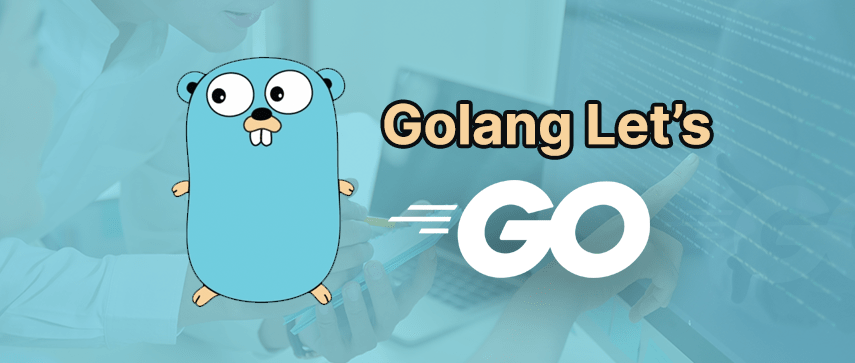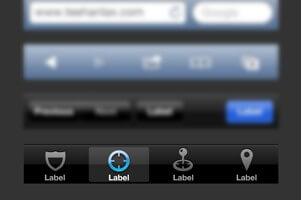Finding the perfect programming language isn’t easy, and with new languages constantly emerging, it’s only becoming more complex. Go is another emerging programming language that has gained a lot of popularity since its launch in 2009.

Many professional developers regard Go as the replacement for C and Java because of its simpler syntax and interface. It encourages hassle-free coding, making it ideal for new developers.
But is the Golang programming language ideal for large-scale business projects, and should you use it for your software development requirements? Let’s find out.
What is the Go Programming Language?
The Go language, also known as Golang or Go, is an open-source, statistically-typed programming language used to produce compiled machine code binaries. Google introduced it in 2009, and thus, it’s also known as Google Go Language. When it comes to syntax, Go is similar to C; however, it has additional capabilities like garbage collection, memory safety, CSP-style concurrency, and structural typing. There are three common ways to implement Golang, as mentioned below:
- Google’s self-hosting compiler toolchain for WebAssembly and other operating systems
- Gccgo, a GCC frontend
- GopherJS, a third-party source-to-source compiler that compiles Golang to JS for frontend Golang web development
Some key features and characteristics of Go are:
- Concurrency primitives for seamless implementation of concurrent systems
- Simple and consistent language – easier to learn and use
- Object-oriented, with structs instead of classes
- Compiler feature to compile large Go programs in less time
- Back pointers to solve common programming issues
- Powerful standard library with rich packages
- Web application building with faster execution speed and simpler constructs
- Testing support for seamless code testing
- System programming with support for cloud computing
Why Use Golang?
Golang stands amongst the fastest-growing programming languages. It supports cross platform development and consists of built-in testing frameworks that help developers create an error-free production environment.
Golang programming language is backed by robust networking capabilities. For instance, if you want to create an HTTP server for your business, your developers just need to write three types of code.
Golang’s ability to host the asynchronous approach of JavaSript and the multithreading of Java is one of the many reasons why 11.83% of developers worldwide are using it over other programming languages.
The recent Golang 1.19 rollout has been a massive addition to the Golang ecosystem, with potential modifications and performance improvements. Implementations around toolchains, runtime, memory models, security, and libraries have simplified various aspects of programming.

Pros and Cons of Using Golang for your Business Projects
By looking at the characteristics in the previous section, Golang seems like a modern-day programming language that brings its own set of advantages to the table. However, it has a few drawbacks as well that you should be aware of. Let’s take a look at them one by one.
Pros of Using Golang
1 Ease of Use
One of the biggest Golang advantages is that it is easy to understand and use. This syntax is simple, making it accessible for beginners. There aren’t many complex functions that one needs to learn.
Moreover, Golang is easy to read, making it an excellent pick for legacy coding involving several coders. Moreover, its proximity to C-style languages makes it easier to learn for programmers proficient in C, C++, or C#.
2 Robust Security Build-In
Simpler code is usually safer than complex code, and that’s the case with Golang. Since it’s a statistically typed language, there’s no need to bother about finding errors from myriad variable types. It also has a garbage collector feature that prevents memory from developing in the code. Recognizing errors is also easier with Go.
3 Smart Standard Library
If you’re tired of importing or learning complicated secondary libraries, the Golang programming language will put you at ease. Its standard library is rich and informative but not overwhelming. In addition, it provides you with an effortless way to include data structures into your code. As a result, you can accomplish complex tasks with a single line of code in Go, which would otherwise require tedious workarounds in other languages.
4 Smart Documentation
Google identifies the need to document programs. Thus, Go comes with smart documentation despite being simple to read and write. There are standard policies documenting all libraries and functions. You even receive alerts when you forget to put documentation when necessary, making it a critical asset for new programmers.
5 Google’s Prominence
Google is here to stay, and so are the programming languages and frameworks it backs. Just like Flutter, Go will continue to receive Google’s support in the upcoming years. So, developers can look forward to new updates and developments in the language.
6 Faster Build Time
Sometimes developers run the code and have to wait aimlessly. But with the Golang programming language, they can easily run their code without having to serve any wait times. This means that building apps backed by thousands of lines of code become quick and easy.
Cons of Using Golang
1 Can be too Simplistic
Since Golang is simple and easy to use, it lacks versatility and high-level functionality. On the other hand, some of the most popular languages in the market are proud of being complex. For example, languages like Haskell and Swift have a strong following because they’re complex to learn and allows coders to achieve a wide range of clever results.
2 Still too Young
While Go has had a terrific start, it’s still too young to compete with veteran languages like C and Python. Its library is smartly and efficiently designed, but it can’t compete with languages like Java, whose library comprises a massive collection of code. By all means, Go can catch up in the years to come, but that time is a bit far.
3 Lacks a Virtual Machine
Golang doesn’t have a virtual machine, which is a huge drawback. Though it results in ease-of-use, it has become one of Go’s biggest disadvantages. The majority of languages nowadays are based on virtual machines (VMs), making the coding process faster and more efficient.
4 Lacks GUI Library
Golang can be an excellent choice for single-page, cross-platform apps. However, it doesn’t have a GUI library, so you’ll need to spend a lot of time and effort to connect a library to your app. This is unlike native solutions like Java and Python that come with in-built libraries.
5 Yet to Find its Niche
Go programming is an amazing skill to have if you work at Google or intend to work at Google. It’s become quite popular inside the Google circle, but it hasn’t found its place outside in the bigger world. We have to wait to find out where Go stands in the larger programming ecosystem.
When to Use the Go Programming Language?

Now that you’ve gone through the pros and cons, let’s discuss some specific Golang use cases to understand when you can use it to your benefit.
1 Cloud-Native Apps
The Golang programming language is an excellent option for cloud-native Golang software development and microservices. Being a modern platform-agnostic language, Go lets you build dependable and flexible cloud applications easily and quickly.
2 Web Development
If you’re looking for a programming language for a web production and reading scalable multiprocessor frameworks, Golang can be an ideal pick. It allows you to develop mobile applications from scratch and lets you generate authentication mechanisms for superior security.
3 Elegant CLIs
CLI, a text-only interface, follows principles that facilitate task-based automation. Golang provides an interface that enables you to develop CLI-based infrastructure and apps with automation and remote capabilities.
4 Scalable Database Implementations
With Golang, you can build and maintain flexible and scalable databases. It allows you to work with various database packages like Oracle, SQL, MongoDB, MySQL, BigQuery, etc. Some drivers and libraries available in Golang are CockroachDB, Bleve, InfluxDB, and GORM.
5 SRE and DevOps
The Go language is gaining significant popularity in Site Reliability Engineering (SRE) and DevOps. Since the Go programming language allows you to build once and promote anywhere, it’s ideal for projects based on CI/CD approaches. With Go, you can improve CI/CD processes and enhance the scalability and reliability of the websites.
6 Standalone Tools and Utilities
If you’re looking for a programming language to build utilities and other resources, Golang can be your best bet. In Golang, you can compile programs to binaries with negligible external dependencies. This way, you can deploy and bundle for redistribution in less time.
7 Distributed Network Services
Network systems rely on concurrency. Golang comes with native concurrency features, such as channels and goroutines, making it ideal for working on network systems. GoLang can be the perfect pick if you want to build programs focusing on networking, cloud resources, and remote functions. For example, you can use Go to build database servers, web app architectures, and APIs. Several global organizations use Golang. Let’s look at some major use cases of Go.
8 Replacements for Existing Infrastructure
Golang can be your go-to option to rewrite old infrastructures in an attempt to avoid obsoleteness. A new version of an internet protocol for clock synchronization among networks, named the Network Time Protocol (NTP) relies on this language.
Now, Let’s check out some real-world examples to understand what is golang used for and why the below global organizations are using it.
Netflix for Enterprise Development
Netflix, the global leader in media services and production, uses Go for enterprise development. They use Go to replace Java and C for optimizing server loading, data-processing, and managing customer data.
American Express for Payments and Rewards
American Express, an international financial services provider, uses the Golang programming language to make its payments and rewards program more efficient, robust, scalable, and stable. They leverage Golang to compose resilient applications and aggregate real-time incidents.
Uber to Improve Customer Experience
Uber, the world’s leading service provider, uses the Go language to streamline map processing and automate decision-making. With Golang, Uber manages to reduce customer wait times and improves customer experience.
Wrapping up,
Already used by technology giants, the Golang programming language is becoming the first choice of businesses intending to accelerate their product development and deliver positive user experiences.
With such growing popularity, times are not far when most organizations either have to compromise on value or leverage Golang development services to generate desired results within quick turnaround times.
Be it an eCommerce initiative, dynamic web portal, on-demand platform, application at a nascent stage, or a business with exponential growth, migrating to Golang is an apt move that can future-proof your efforts.
If you are planning to make a switch, you can hire Golang developers from Mobisoft and start your project right away.

Author's Bio:

Pritam Barhate, with an experience of 14+ years in technology, heads Technology Innovation at Mobisoft Infotech. He has a rich experience in design and development. He has been a consultant for a variety of industries and startups. At Mobisoft Infotech, he primarily focuses on technology resources and develops the most advanced solutions.


